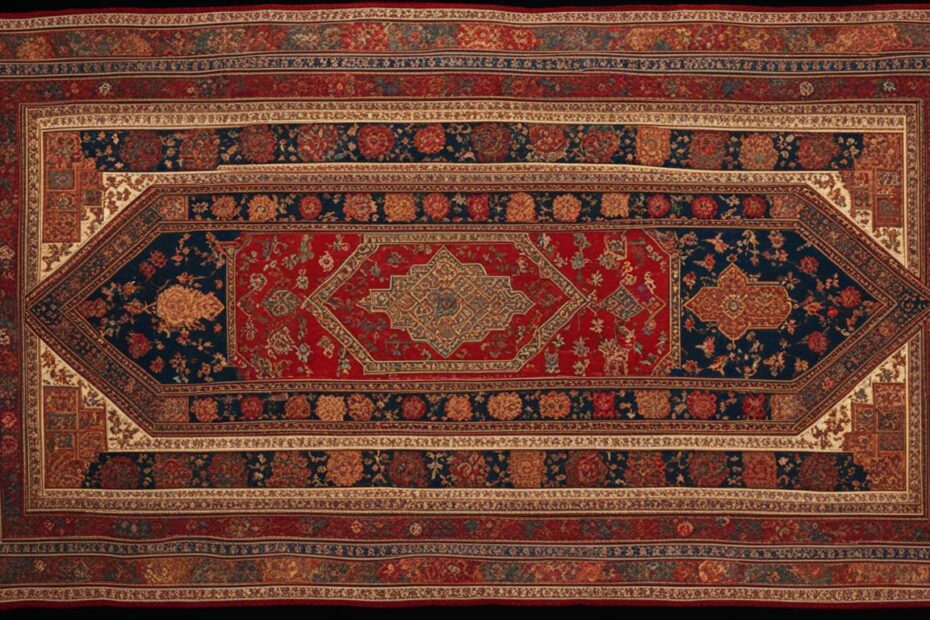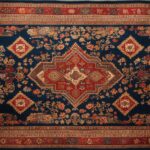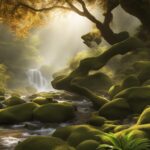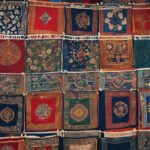No other object holds the same spiritual significance and artistic allure as a prayer rug. These woven masterpieces have traversed the depths of time, threading together the diverse tapestry of faith across cultures and continents. The history of prayer rugs is a fascinating journey that unveils the deep-rooted reverence and enduring beauty of these intricate creations.
From their humble beginnings to their status as cherished relics, every prayer rug tells a story. Let us embark on a captivating exploration of the origins, evolution, and historic significance of these sacred treasures. Join us as we delve into the corridors of time and unravel the rich tapestry of prayer rug history.
Key Takeaways:
- Prayer rugs are both functional objects and artistic expressions of spirituality.
- They have a profound heritage in religious traditions worldwide.
- The history of prayer rugs spans diverse cultures and continents.
- These woven masterpieces hold historic significance and enduring beauty.
- The origins, evolution, and symbolism of prayer rugs are deeply intertwined with the faith they represent.
The Origins of Prayer Rugs
Prayer rugs have a rich and fascinating history that can be traced back to ancient civilizations. However, it was during the Golden Age of Islamic civilization, spanning from the 7th to the 13th centuries, that these rugs truly flourished. Influenced by the Islamic world’s emphasis on architectural beauty and intricate design, prayer rugs became a unique and important form of artistic expression.
Early prayer rugs often featured stunning geometric patterns, reflecting the mathematical precision esteemed in Islamic culture. These rugs were not only functional but also beautiful objects that added a touch of elegance to the act of prayer. Over time, various regions and cultures added their own artistic touches to the development of prayer rugs.
One of the most significant contributions to the evolution of prayer rugs came from the Islamic world’s Golden Age. During this time, the Islamic civilization was thriving, and advancements were made in various fields, including art, science, and architecture. It was a period of immense creativity and cultural exchange, resulting in the blending of different artistic traditions and influences.
Prayer rugs became a reflection of this rich cultural tapestry, with distinct styles and motifs emerging from various regions. Persian rugs, for example, were known for their intricate floral patterns and vibrant colors, while Turkish prayer rugs featured bold geometric shapes and medallions.
The beauty and craftsmanship of prayer rugs from the Golden Age of Islamic civilization still captivate art enthusiasts and historians today. These ancient prayer rugs serve as a testament to the artistic achievements of the time and hold immense historical and cultural significance.
Golden Age of Islamic Civilization: Key Points
- Took place between the 7th and 13th centuries
- Islamic world’s emphasis on architectural beauty and intricate design extended to textiles
- Prayer rugs became a unique form of artistic expression
- Early rugs featured geometric patterns, reflecting Islamic culture’s mathematical precision
- Various regions and cultures added their own artistic touches
- Persian and Turkish prayer rugs emerged as distinct styles

Evolution and Symbolism
Prayer rugs have undergone a remarkable evolution both in terms of their aesthetics and functionality. As trade routes expanded and cultural exchange flourished, different regions adopted distinct weaving techniques and designs, resulting in a rich tapestry of styles. Persian prayer rugs, with their intricate floral patterns and vibrant colors, are renowned for their exquisite beauty. Turkish prayer rugs, on the other hand, feature bold geometric shapes and captivating medallions that reflect the culture’s geometric precision.

Symbolism plays a significant role in the design of prayer rugs. One of the most prominent symbolic elements is the Mihrab, which indicates the direction of Mecca, the holiest city in Islam. The Mihrab serves as a focal point during prayer, guiding worshippers in their orientation. Additionally, prayer rugs often incorporate motifs such as the Crescent Moon, symbolizing rebirth and spiritual illumination, and the Kaaba, representing the spiritual center of the Islamic faith.
RASM’s Unique Contribution
In the world of prayer rugs, RASM stands out as a prominent producer, known for their dedication to preserving authenticity while incorporating modern elements. Their curated collection not only pays homage to classical designs and motifs but also resonates with today’s worshippers, creating modern prayer rugs that blend tradition and innovation.
Each prayer rug crafted by RASM is a testament to their commitment to quality and craftsmanship. Meticulously woven with attention to detail, these rugs enhance the spiritual experience of prayer, creating a sacred space that inspires devotion. With RASM’s prayer rugs, worshippers can find solace and tranquility, connecting with their faith on a deeper level.
RASM’s skilled artisans utilize traditional techniques passed down through generations, ensuring that the authenticity of prayer rugs is preserved. These heirloom pieces carry the rich history and cultural significance of prayer rugs, allowing worshippers to connect with their heritage while embracing the modern world.
As RASM looks to the future, they continue to innovate and push the boundaries of prayer rug design. Soon, they will be offering newly designed prayer rugs that further enrich their contributions to this ancient art form. These modern prayer rugs will bring a fresh perspective to the tradition, allowing worshippers to experience their spirituality in a contemporary context while maintaining the essence of prayer rug craftsmanship.
Preserving Authenticity in Design
Through careful curation and design, RASM’s prayer rugs strike a delicate balance between tradition and modernity. While incorporating innovative elements, the essence of each rug remains rooted in the timeless heritage of prayer rugs.
“We believe that prayer rugs should embrace the traditions and aesthetics of the past while resonating with the present-day worshippers. Our goal is to create prayer rugs that are not only visually stunning but also spiritually uplifting.”
RASM’s commitment to preserving authenticity goes beyond design. They source the finest materials, ensuring that each prayer rug is crafted with the utmost care and attention to detail. From the weaving process to the finishing touches, RASM’s prayer rugs reflect the dedication and passion of their artisans.
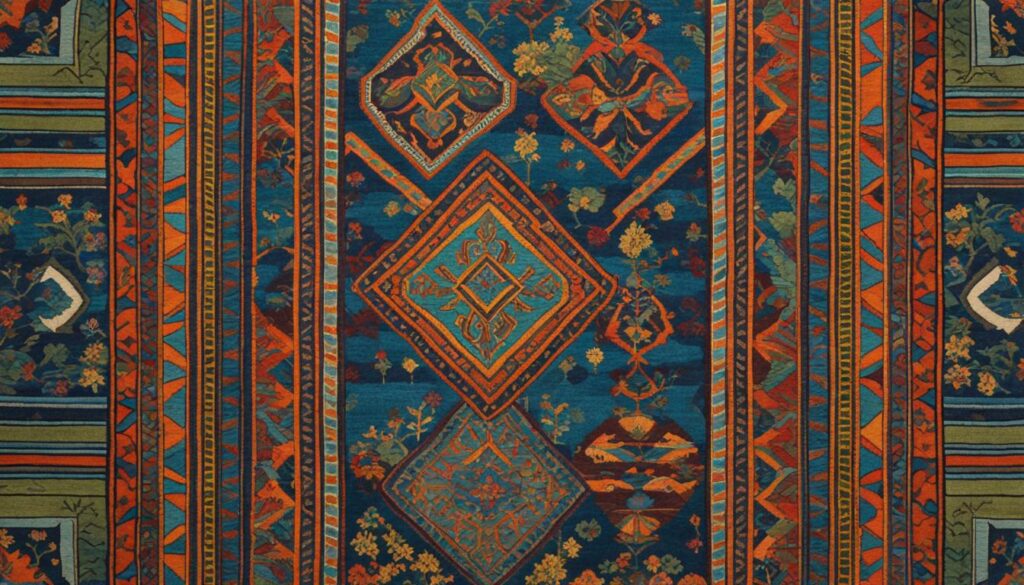
Blending Tradition and Innovation
RASM understands the importance of embracing innovation to meet the evolving needs of worshippers. By blending tradition and innovation, they create prayer rugs that cater to the modern lifestyle without compromising on the spiritual significance of prayer.
With a keen eye for design and an understanding of contemporary aesthetics, RASM infuses their prayer rugs with modern elements, making them relevant to today’s worshippers. From subtle color palettes to contemporary patterns, these rugs seamlessly integrate into modern living spaces while maintaining their spiritual essence.
RASM’s Unique Contribution
| Preserving Authenticity | Blending Tradition and Innovation |
|---|---|
| Curated collection honoring classical designs and motifs | Integration of modern elements without compromising spirituality |
| Crafted with a commitment to quality and craftsmanship | Embracing contemporary aesthetics while retaining the essence of prayer rugs |
| Sourcing the finest materials for authenticity | Creating rugs that are visually stunning and spiritually uplifting |
With their unique contribution to the world of prayer rugs, RASM continues to inspire worshippers and collectors alike. Their dedication to preserving authenticity and blending tradition with innovation ensures that prayer rugs remain a cherished part of our cultural heritage.
Islamic Art and Islamic Carpets in History
Islamic art encompasses a rich tapestry of artistic forms that reflect the cultural and religious values of the Islamic world. From architecture and calligraphy to painting, ceramics, textiles, and metalwork, the art of the Islamic world is renowned for its intricate craftsmanship and timeless beauty.
Islamic architecture is a prominent form of Islamic art, featuring distinctive elements such as domes and minarets. These architectural marvels serve as symbols of the Islamic world’s grandeur and spiritual significance.
Islamic carpets hold a special place within Islamic societies and have a long history steeped in craftsmanship and beauty. Particularly, pile carpets are highly revered and cherished. They serve as more than functional floor coverings, as they are considered works of art in their own right.
Islamic carpets feature exquisite designs that often incorporate geometric patterns, arabesques, and intricate floral motifs. These patterns are not only aesthetically pleasing but also hold spiritual significance, acting as visual expressions of devotion and faith. Through the art of carpet weaving, Islamic cultures have celebrated their heritage and transmitted their religious values across generations.
For instance, the delicate art of calligraphy is an essential aspect of Islamic art. Arabic script, known as the language of the Quran, is beautifully rendered to create intricate patterns and designs. Each stroke carries deep symbolism and devotion, making calligraphy a cherished form of artistic expression within the Islamic world.
Manuscript illumination is another notable form of Islamic art that entails decorating handwritten texts with vibrant colors, delicate gold leaf, and intricate designs. These illuminated manuscripts, often religious texts, exemplify the meticulous craftsmanship and attention to detail that are integral to Islamic artistic traditions.
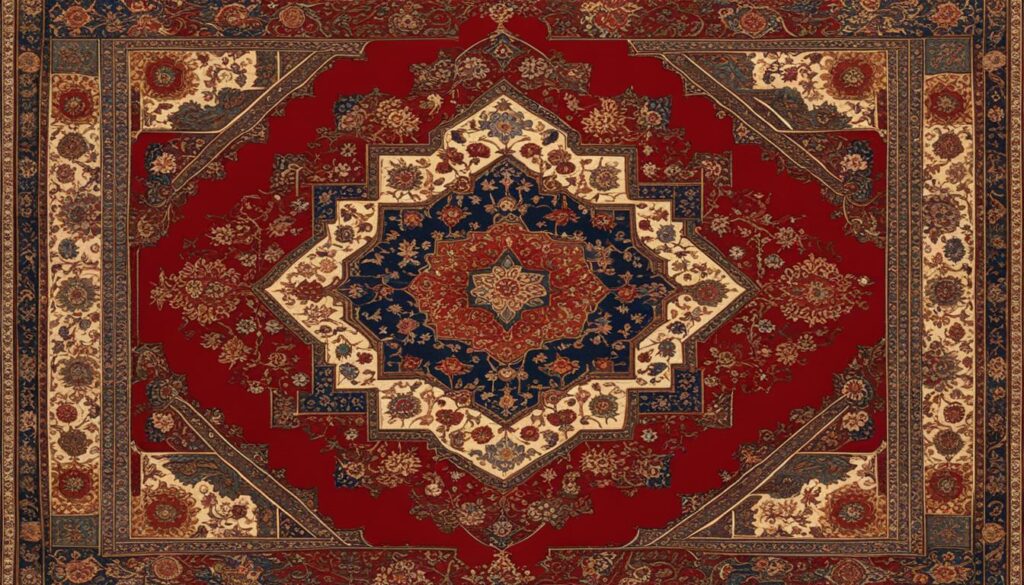
Islamic art is not just a visual feast for the eyes; it is a testament to the rich heritage and spiritual devotion of the Islamic world. From the soaring minarets of mosques to the intricate patterns of Islamic carpets, this art form continues to captivate and inspire people around the globe.
Islamic Art Forms
| Art Form | Description |
|---|---|
| Architecture | Distinctive architectural styles characterized by elements such as domes and minarets. |
| Calligraphy | The art of beautiful writing, often featuring Arabic script. |
| Painting | Richly colored representations of Islamic culture and religious themes. |
| Ceramics | Elegant pottery and tilework adorned with intricate designs. |
| Textiles | Exquisite fabrics and carpets showcasing geometric patterns and floral motifs. |
| Metalwork | Intricately crafted metal objects, such as jewelry and intricate filigree. |
Islamic Carpets: From Cottage Industry to Fine Art
In Islamic societies, carpet weaving underwent a remarkable transformation, evolving from a simple cottage industry into a revered form of fine art. As the influence of Islam spread, so too did the development of exquisite Islamic carpet patterns and standardized production methods. These luxurious court rugs became more than just functional floor coverings; they became status symbols, representing wealth, power, and impeccable taste.
The Islamic carpet industry flourished during a time when craftsmanship and attention to detail were highly valued. Skilled artisans meticulously crafted each carpet, employing intricate techniques and designs that showcased the mastery of their trade. These carpets were not only beautiful but also served as a testament to the socio-economic status of their owners.
An essential feature of Islamic carpets is the inclusion of a niche, known as the mihrab, which represents the direction of Mecca. This religious symbol reflects the importance of prayer and serves as a visual reminder to align one’s worship towards the Holy City. Additionally, Islamic carpets exhibit various decorations and motifs, each influenced by the region of their origin, further reflecting the cultural diversity and artistic heritage of the Islamic world.
To fully appreciate the cultural significance and immense craftsmanship of Islamic carpets, let us explore an example from RASM’s collection:
| Carpet | Region | Pattern | Symbolism |
|---|---|---|---|
| Tabriz Carpet | Tabriz, Iran | Medallion and floral motifs | Unity and abundance |
The Tabriz Carpet, originating from Tabriz, Iran, exemplifies the intricate artistry found in Islamic carpets. Its pattern features a central medallion surrounded by floral motifs, symbolizing unity and the abundance of the natural world. The meticulous attention to detail and harmonious design of this carpet showcase the refined craftsmanship that has made Islamic carpets renowned around the globe.
“Islamic carpets are a testament to the rich cultural heritage and artistic aspirations of Islamic societies. They encapsulate status, wealth, and devotion, providing an extraordinary blend of functionality and aesthetic beauty.” – [Name Surname], Islamic Art Historian
Today, Islamic carpets continue to captivate collectors, art enthusiasts, and those seeking to infuse their spaces with a touch of elegance and cultural significance. The legacy of the Islamic carpet industry lives on, empowering future generations to appreciate, preserve, and continue this timeless tradition.
Rugs in Other Religions
Rugs have long played a significant role in religious practices, extending beyond Islam. In various faiths, rugs serve as more than just a functional item; they embody spiritual symbolism, provide comfort, and enhance the worship experience. Let’s explore the presence of rugs in three major religions: Judaism, Christianity, and Buddhism.
Judaism
In Judaism, rugs or “shtenders” are often used during prayer and prostration, creating a designated space for spiritual connection. These rugs offer comfort and beauty, enabling worshippers to focus their attention on prayer and meditation. Through intricate designs and craftsmanship, these rugs reflect the reverence and devotion of the Jewish community.
Christianity
Textiles with Christian themes have been an integral part of Christian worship, especially in early Christian sects like the Coptics. These textiles, including intricate rugs, tapestries, and altar cloths, are adorned with religious motifs and symbols. They serve as visual representations of faith, depicting scenes from biblical narratives and illustrating the life of Christ.
Buddhism
In Buddhism, rugs hold a unique place in meditation and contemplation practices. Often owned by prominent religious figures, Buddhist rugs feature striking designs that encourage spiritual detachment and facilitate focused meditation. These rugs, intricately woven with profound symbolism, create an environment conducive to mindfulness and self-reflection.
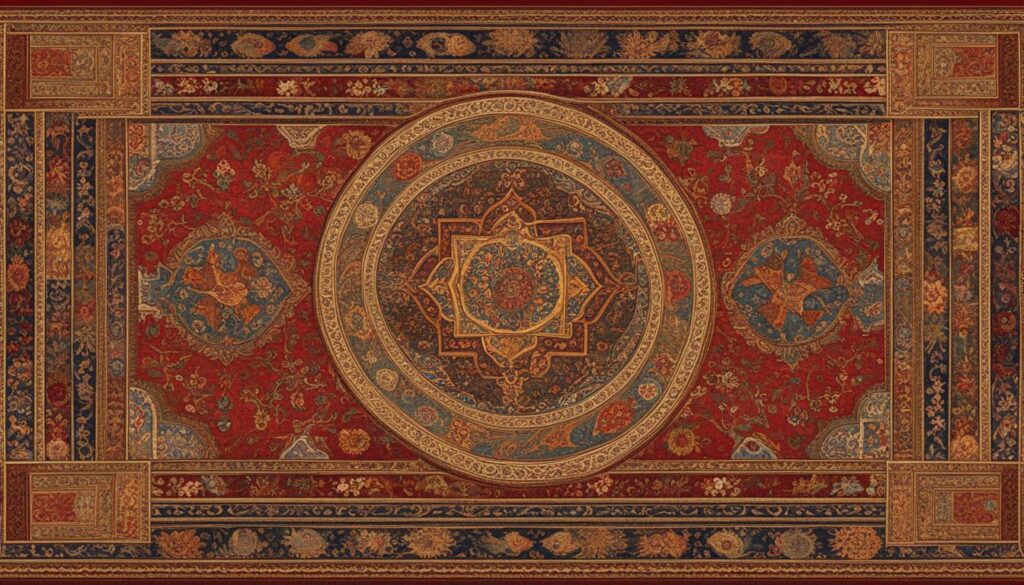
Religious themes in rugs are a testament to the universal human desire for spiritual connection and expression. Whether it’s the rugs in Judaism, Christianity, or Buddhism, these artistic creations not only exemplify the integration of faith and artistry but also foster a deeper sense of devotion and reverence in worshippers.
Rug Themes Across Cultures
Oriental rugs are not only exquisite works of art but also reflect the rich cultural tapestry and religious beliefs of different communities. These rugs often incorporate religious themes that hold deep symbolic significance. Let’s explore how various religious traditions have influenced the design and motifs of rugs across different cultures and time periods.
Hindu Designs in India
India, with its vibrant Hindu culture, has a long tradition of incorporating religious themes into its rugs. Hindu designs often depict gods, goddesses, and spiritual symbols such as lotus flowers, mandalas, and sacred animals. Each element carries a specific meaning, creating a harmonious fusion of art and spirituality.
Islamic Motifs in Muslim Countries
Islamic motifs are iconic in rug design, reflecting the rich heritage and spiritual significance of Islam. Geometric patterns, arabesques, and intricate calligraphy are commonly seen in prayer rugs, representing devotion and reverence. These designs are found in Muslim countries worldwide and are cherished for their aesthetic beauty and religious symbolism.
Buddhist Themes in Asia
Buddhism’s principles of compassion, mindfulness, and enlightenment are often reflected in the rugs of Buddhist regions. These rugs may feature representations of Buddhist deities, symbols of the Eight Auspicious Symbols, or intricate mandalas. The designs are intended to inspire meditation, cultivate inner peace, and invite spiritual contemplation.
Christian Symbolism in Europe
In Europe, Christian symbolism has influenced the designs of rugs, particularly during the medieval and Renaissance periods. Rugs adorned with scenes from biblical stories, Christian iconography, and sacred symbols were prevalent. These rugs served as visual expressions of faith and were often found in churches, monasteries, and noble households.
The incorporation of religious themes in rugs highlights the enduring link between art and spirituality. Each rug tells a story of faith, culture, and the human desire to express reverence and devotion in tangible forms. Whether Hindu, Islamic, Buddhist, or Christian, these rugs weave together the threads of religious beliefs, inspiring awe and contemplation in those who experience their beauty.
Conclusion
Prayer rugs are more than just beautiful textiles; they are a tapestry that connects faith and artistry. From their origins in the Islamic Golden Age to their continued significance today, prayer rugs carry a spiritual significance that endures through time. These rugs serve as a tangible expression of devotion and provide a sacred space for believers to connect with the divine.
Throughout history, prayer rugs have been crafted with immense care and attention to detail, reflecting the enduring beauty of religious traditions. The intricate designs and rich symbolism found in prayer rugs tell stories of faith, culture, and heritage. Each knot and thread weaves a tale of spiritual devotion and artistic inspiration.
RASM, a provider of prayer rugs, understands the importance of preserving the authenticity and spiritual essence of these sacred objects. Their curated collection pays homage to traditional designs while incorporating innovative elements, ensuring that the beauty and heritage of prayer rugs are celebrated.
As we reflect on the spiritual significance of prayer rugs, we are reminded of the enduring power of faith. Prayer rugs serve as a bridge between the tangible and the divine, inviting worshippers to connect with their inner selves and the greater universe. They are not only objects of devotion but also sources of inspiration and solace.
In conclusion, prayer rugs hold an enduring beauty and spiritual significance that transcends time and culture. They represent a tapestry of faith, connecting worshippers with their beliefs and serving as a visual reminder of the profound spirituality that exists within us all.
Explore the World of Prayer Rugs
If you are captivated by the beauty and history of prayer rugs, we invite you to immerse yourself in our rug showroom or browse our online store. At [Brand Name], we curate an extraordinary collection of Oriental, Persian, and Turkish rugs from around the world, showcasing the diverse artistry and craftsmanship of these cultural treasures.
Step into our showroom and be surrounded by a tapestry of colors, patterns, and textures. Each rug tells a story, carrying the weight of centuries of tradition and spiritual significance. Whether you are seeking an antique masterpiece or a modern interpretation, our collection offers a wide range of options to suit your taste and style.
But our commitment doesn’t stop at providing exquisite rugs. We also offer comprehensive rug services to ensure the longevity and preservation of your prized possession. Our expert team can handle cleaning, repair, and appraisal, ensuring that your rug receives the care it deserves.
Discover the allure of Oriental, Persian, and Turkish rugs, where the ancient art of prayer rug making meets the contemporary world. Experience the harmonious blend of tradition and innovation, and let the beauty of these rugs enhance your space and inspire your spirit. Visit our rug showroom or explore our online store today to embark on a journey into the fascinating world of prayer rugs.
FAQ
What is the history of prayer rugs?
Prayer rugs have a profound heritage and date back to ancient civilizations. They took shape during the Golden Age of Islamic civilization, between the 7th and 13th centuries, where the focus on architectural beauty extended to textiles, giving rise to the creation of prayer rugs.
How have prayer rugs evolved over time?
Prayer rugs have evolved both aesthetically and functionally over the centuries. Different regions and cultures adopted distinct weaving techniques and designs, resulting in a diverse array of styles and motifs. Persian rugs are known for their intricate floral patterns and vibrant colors, while Turkish prayer rugs feature bold geometric shapes and medallions.
What is the symbolism in prayer rugs?
Symbolism plays a significant role in the design of prayer rugs. Elements like Mihrabs indicate the direction of Mecca, while other motifs carry deeper spiritual meanings. Each region and culture infuses their unique symbolism into the design of prayer rugs.
How does RASM contribute to the tradition of prayer rugs?
RASM embraces the tradition of prayer rugs while incorporating modern elements. Their curated collection pays homage to classical designs and motifs while resonating with today’s worshippers. Each rug is crafted with a commitment to quality and craftsmanship, ensuring that they enhance the spiritual experience of prayer.
What is the significance of Islamic art and carpets?
Islamic art encompasses various artistic forms, including architecture, calligraphy, painting, ceramics, textiles, and metalwork. Islamic carpets, especially pile carpets, hold a special place in Islamic societies and have a long history of craftsmanship and beauty. They reflect the cultural and religious values of the Islamic world.
How did Islamic carpets transition into a fine art form?
Islamic carpet weaving transitioned from a utilitarian practice to a fine art form. The introduction of Islam led to the development of new patterns and the standardization of production methods. Court rugs became exquisite works of art that symbolized status and wealth.
Do rugs have significances in other religions?
Yes, rugs have played significant roles in other religions as well. In Judaism, rugs have been used during prayer and prostration for comfort and beauty. In Christianity, textiles with Christian themes have been created and used particularly by early Christian sects like the Coptics. Buddhist rugs have been used for meditation and display shocking designs as a means of spiritual detachment.
How do rug themes vary across cultures?
Rug themes vary across cultures and religions. From Hindu designs in India to Islamic motifs in Muslim countries and Buddhist and Christian symbolism depicted in rugs from Asia and Europe, the art of rug-making reflects diverse religious beliefs across different cultures and time periods.
What is the significance of prayer rugs?
Prayer rugs hold a profound heritage and serve as a tapestry connecting faith and artistry. They represent a timeless bond between spirituality and the human spirit’s creativity. The enduring beauty of prayer rugs reminds us of the power of faith and the inspiration it brings.
Where can I explore the world of prayer rugs?
If you want to further explore the world of prayer rugs, you can visit our rug showroom or online store. We offer an extraordinary collection of Oriental, Persian, and Turkish rugs from around the world. Our services include cleaning, repair, and appraisal to ensure that your rug is well-maintained and cherished.


